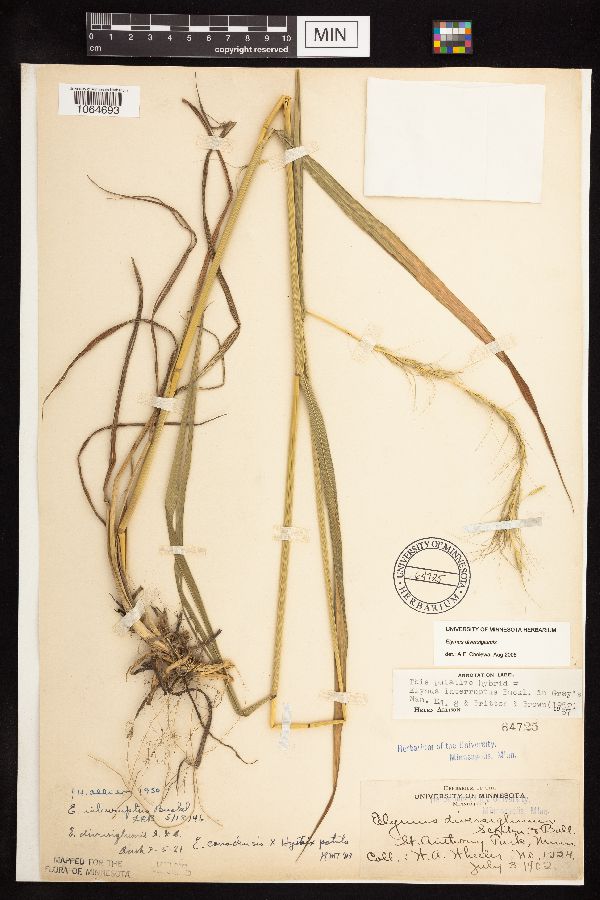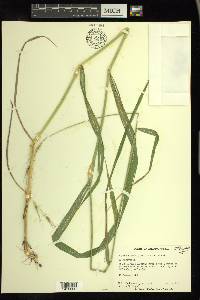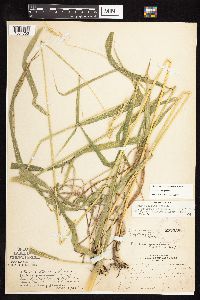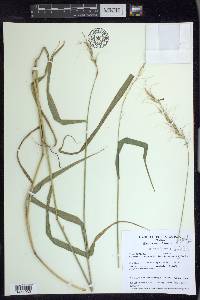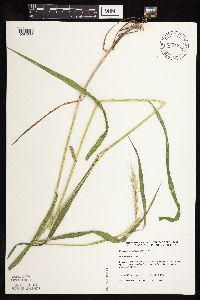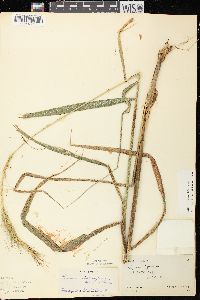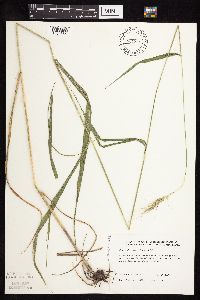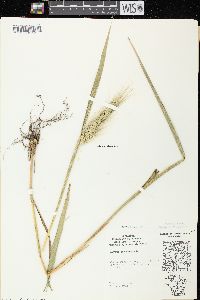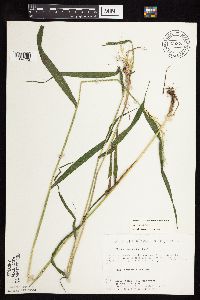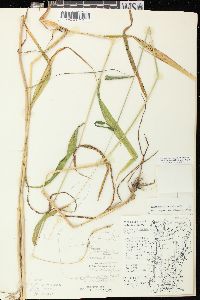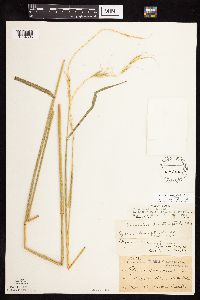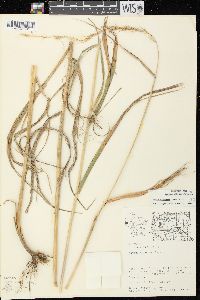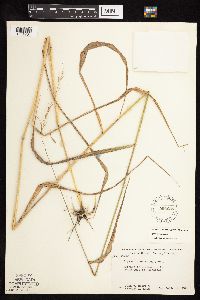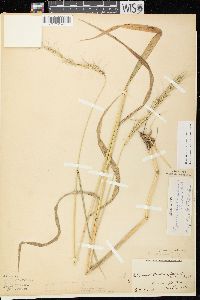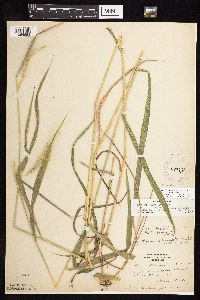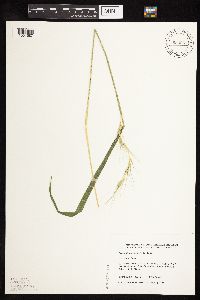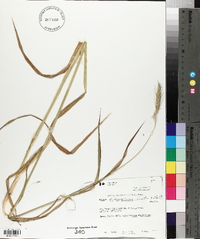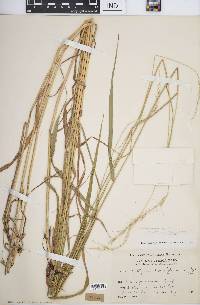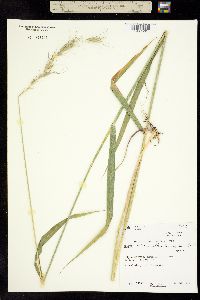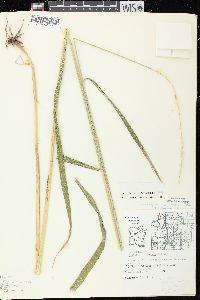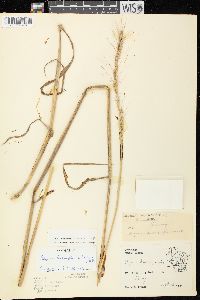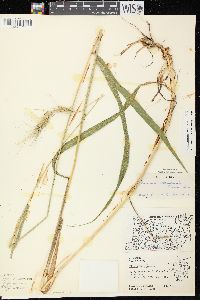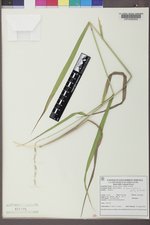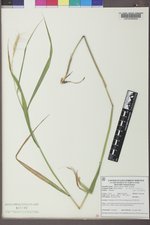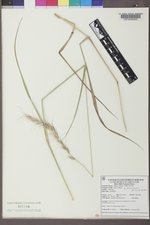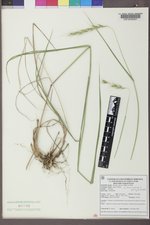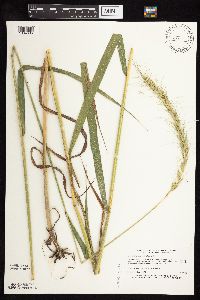Elymus diversiglumis
|
|
|
|
Family: Poaceae
Various-Glum Wild Rye, more...diverseglume wildrye
[Terrellia diversiglumis (Scribn. & C.R. Ball) Lunell] |
Plants cespitose, not rhizomatous, sometimes moderately glaucous. Culms 70-160 cm, erect; nodes 4-9, mostly exposed, glabrous. Leaves evenly distributed; sheaths glabrous, often purplish; auricles 1-2 mm, purplish or brownish black; ligules usually 1-2 mm; blades 5-17 mm wide, lax, adaxial surfaces usually pilose, at least on the veins, occasionally scabrous. Spikes 8-28 cm long, 3-5 cm wide, nodding to pendent, with 2 spikelets per node, rarely with 1 or 3 at a few nodes; internodes 4-6(9) mm long, 0.2-0.3 mm thick at the thinnest sections, margins and summits often pubescent. Spikelets 10-16 mm, appressed, with 2-4(5) florets, lowest florets functional; disarticulation above the glumes, beneath each floret. Glumes usually differing in length by at least (3)4 mm, occasionally obsolete, (1)2-15(20) mm long including the undifferentiated awns, indurate at the base, (0.1)0.2-0.4(0.6) mm wide, setaceous, 0-1-veined, tapering from the base, scabrous or hispidulous at least towards the apices, margins firm, awns often outcurving; lemmas 7-12 mm, usually silvery-hirsute to sericeous, occasionally hirtellous or strigose, at least near the margins, backs sometimes scabrous, awns 18-35 mm, moderately to strongly outcurving at maturity; paleas 7-10 mm, obtuse, occasionally emarginate; anthers 2-4 mm. Anthesis from early June to late July. 2n = 28. Elymus diversiglumis grows in moist to dry, often base-rich and alluvial soils, in open woods, woodland margins, and thickets in the northern Great Plains, from Saskatchewan and Manitoba to Wyoming, Wisconsin, and Iowa. Elymus diversiglumis is a variable species that, like E. svensonii -and E. churchii , may have originated from hybrids between Elymus canadensis var. canadensis and E. hystrix , although part of its range extends further west than the current distribution of the latter species. Elymus diversiglumis usually reaches anthesis 2-4 weeks earlier than sympatric populations of E. canadensis . Church (1954, 1958, 1967a) found that most artificial canadensis-hystrix hybrids, as well as some plants of E. diversiglumis itself, are sterile. Those that were not sterile could occasionally form fertile backcrosses with E. canadensis and, to a lesser extent, with E. hystrix. Introgressant populations involving all three species are known. Artificial crosses with other species have not been successful. Tufted, 7-15 dm; lvs 5-15 mm wide, usually hairy above, the sheaths commonly overlapping; spikes flexuous and ±strongly arcuate, 10-20 cm, the rachis flattened, ciliate-margined, with internodes (3-)5-7(-10) mm; spikelets usually paired, closely ascending, 2-3(4)-fld; glumes setaceous from an indurated base, very unequal, 2-15(-20) x 0.1-0.5 mm, or sometimes some of them obsolete; lemmas (7-)8-10(-12) mm, silvery-hirsute or rarely merely hirtellous, with a widely divergent awn 2-3 times as long; paleas 7.5-9 mm, obtuse, usually with an expanded, more densely hairy tip; anthers 2-3(-3.5) mm; 2n=28. Borders of woods, clearings, river- terraces, and disturbed sites; Wis., Minn., and Io. to sw. Ont., Sask., and e. Wyo. (E. interruptus, misapplied) Gleason, Henry A. & Cronquist, Arthur J. 1991. Manual of vascular plants of northeastern United States and adjacent Canada. lxxv + 910 pp. ©The New York Botanical Garden. All rights reserved. Used by permission. |

